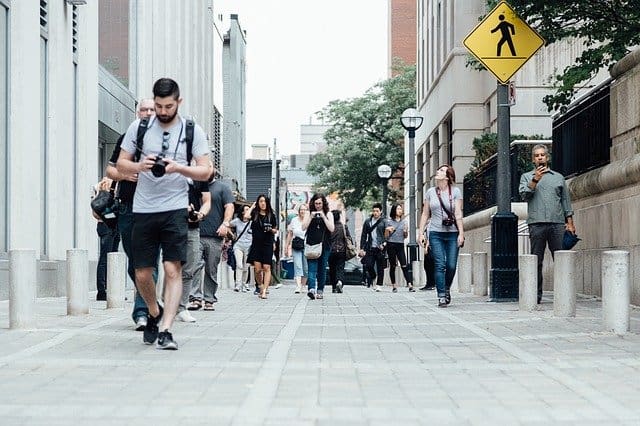The world requires a new approach to urban planning and mobility
Cities face the challenge of reducing CO2 emissions to improve habitat. WHO studies show that a place with greater biodiversity offers a better quality of life for its inhabitants. World Habitat Day is commemorated on October 4.

Currently, more than 500 million urban residents face problems due to rising sea levels and more frequent or severe storms, and by mid-century, more than 3.3 billion people could be at risk of suffering severe climate impacts, according to data from the United Nations (UN).
Alejandra Alvarado Zink, environmental specialist at UNAM's General Directorate for the Dissemination of Science, points out that more than 55 percent of the world's population lives in cities, which emit more than 70 percent of global greenhouse gases, so it is necessary to reflect on how these places can be improved or perfected.
The Ministry of Environment and Natural Resources reported in 2020 that 10 percent of municipalities in Mexico do not provide public garbage collection services so that 16 percent of waste is not collected. Most of the final disposal sites are open dumps or landfills, and only 3.7 percent of the 1,000 sites comply with NOM-083.
It is worth noting that confinement significantly increased waste production in Mexico: household waste from 3.5 to 17 percent, while biological-infectious waste increased by up to 300 percent. On the other hand, of the seven thousand 800 million inhabitants of the planet, it is estimated that two thousand 200 million lack access to drinking water and two thousand 500 million to sanitation; that is, one-third of the population.
Regarding Mexico, data from the Numeragua report, 2018, of the National Water Commission, indicate that 39 percent of national uses (except hydroelectricity) are supplied by groundwater. In the metropolitan area of Mexico City, one billion cubic meters are extracted each year and the estimated natural recharge is 500 million. Due to the pandemic, demand increased from 20 to 50 percent of the vital liquid; in addition, operators had to take precautions so that the resource would not become a factor in the transmission of COVID-19.
Alejandra Alvarado, Master of Science from the University of New Mexico, explains that in Biology, habitat is considered the area where an organism lives, carries out its activities, and carries out its life. In the case of human beings, there are multiple ecosystems in which they have developed, but they especially thrive in temperate forests or near bodies of water.
In 1985, the United Nations established the first Monday of October of each year as World Habitat Day, and the first time it was celebrated it had the objective of reflecting on the right to housing; this year the international organization invites us to think about "Accelerating urban action for a carbon-free world".
Alvarado Zink comments: "The UN now wants to raise awareness that cities must be better planned because the population continues to grow and more and more spaces where people live are required. Many people who live in other places start to migrate to cities in the hope of finding a better life and it turns out that this is not the case."
On the occasion of the commemoration, which is being celebrated on October 4 this year, she says that the way we design energy generation, transportation, and construction, as well as the cities themselves, will be decisive in putting nations on track to achieve the Paris Agreement and the 2030 Sustainable Development Goals.
A revolution in urban planning and mobility, better fuel efficiency, zero-emission vehicles; changes in habits such as walking, greater use of bicycles, public transport, or short trips are needed. Cities will benefit most from phasing out coal: clean air, open green spaces, and healthier people.
Although modern societies are dealing with the consequences of decisions made by past administrators, it is necessary to think in the long term and incorporate technologies that reduce CO2 emissions; strengthen green areas, which in cities like Mexico City are not accessible everywhere and neither are blue spaces (bodies of water).
When we think of Mexico City we think of Xochimilco because the water attracts us, or the Chapultepec forest because there is a lake there. Believe it or not, those types of environments strengthen our mental health or the environmental health that exists in these spaces. That is what we are pursuing, there are many ways to do it. We from ecology can promote green areas that improve the quality of life," she reflects.
Several studies promoted by the World Health Organization show that a site with greater biodiversity offers a better quality of life to its inhabitants, compared to those with less. These studies have been corroborated by studies on the benefits of blue or green spaces. They are important in the psychological aspect due to the confinement due to the pandemic, since it is not the same to be in confinement, look through the window and see trees or listen to the singing of birds, as it is to observe only gray buildings.
Urban dwellers can have a better quality of life and reduce the effects of climate change by making better use of resources, supporting the development of green roofs, placing flower pots, contributing to reforestation in public places, and, above all, not wasting water.
Source: UNAM




